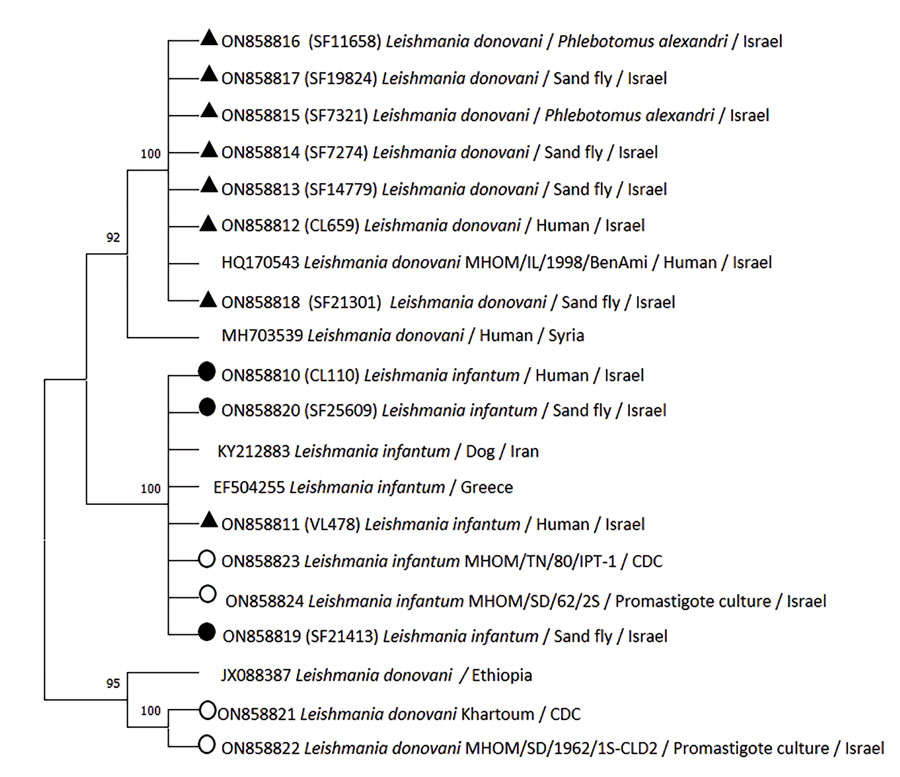Volume 29, Number 5—May 2023
Research
Leishmania donovani Transmission Cycle Associated with Human Infection, Phlebotomus alexandri Sand Flies, and Hare Blood Meals, Israel1
Figure 4

Figure 4. Phylogenetic analysis of Leishmania K26 gene in study of Leishmania donovani transmission cycle associated with human infection, Phlebotomus alexandri sand flies, and hare blood meals, Israel. Leishmania-specific K26 gene fragment (348 bp) was amplified by PCR from P. alexandri flies, pooled female Phlebotomus spp. flies, and patient samples and then sequenced. Tree was constructed by using the maximum-likelihood method and Hasegawa-Kishino-Yano model. K26 phylogenetic analysis shows separation between L. infantum and L. donovani. Sand fly and clinical samples from this study (black triangles), L. infantum isolates from Israel (black circles), Leishmania international reference strains (empty circles), and available GenBank Leishmania sequences are shown. GenBank accession number, isolate source, and country of origin are shown for each sequence. Only bootstrap values >70% are shown next to branches. Not to scale.
1Data from this study were presented at the Israeli Society for Parasitology, Protozoology and Tropical Diseases Annual Meeting; March 21, 2022; Kfar Hamaccabiah, Ramat Gan, Israel.